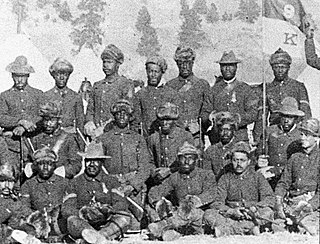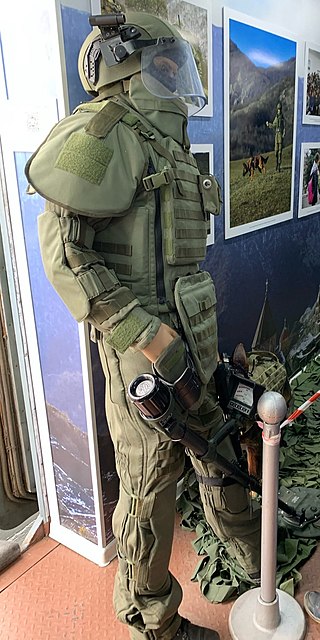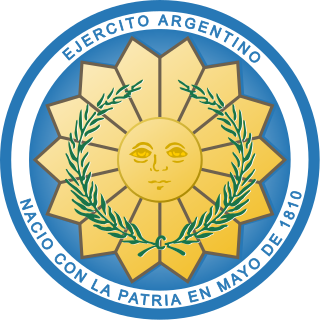A company is a military unit, typically consisting of 100–250 soldiers and usually commanded by a major or a captain. Most companies are formed of three to seven platoons, although the exact number may vary by country, unit type, and structure.

A troop is a military sub-subunit, originally a small formation of cavalry, subordinate to a squadron. In many armies a troop is the equivalent element to the infantry section or platoon. Exceptions are the US Cavalry and the King's Troop Royal Horse Artillery where a troop is a subunit comparable to an infantry company or artillery battery. Historically the remainder of the Royal Horse Artillery used the term troop in the same manner but they eventually aligned with the rest of the Royal Regiment of Artillery in referring to troops as subordinate to artillery batteries.
Colonel is a senior military officer rank used in many countries. It is also used in some police forces and paramilitary organizations.

A sapper, also called a combat engineer, is a combatant or soldier who performs a variety of military engineering duties, such as breaching fortifications, demolitions, bridge-building, laying or clearing minefields, preparing field defenses, and road and airfield construction and repair. They are also trained and equipped to serve as provisional infantry, fighting as such as a secondary mission. A sapper's duties facilitate and support movement, defense, and survival of allied forces and impede those of enemies. The term "sapper" is used in the British Army and Commonwealth nations and the U.S. military.
A hundred is an administrative division that is geographically part of a larger region. It was formerly used in England, Wales, some parts of the United States, Denmark, Southern Schleswig, Sweden, Finland, Norway, the Bishopric of Ösel–Wiek, Curonia, the Ukrainian state of the Cossack Hetmanate and in Cumberland County in the British Colony of New South Wales. It is still used in other places, including in Australia.

The uniforms and insignia of the Schutzstaffel (SS) served to distinguish its Nazi paramilitary ranks between 1925 and 1945 from the ranks of the Wehrmacht, the German state, and the Nazi Party.

In a military context, the term front can have several meanings. According to official US Department of Defense and NATO definitions, a front can be "the line of contact of two opposing forces." This front line can be a local or tactical front, or it can range to a theater. An example of the latter was the Western Front in France and Belgium in World War I.
This is a list of words, terms, concepts, and slogans that have been or are used by the German military. Ranks and translations of nicknames for vehicles are included. Also included are some general terms from the German language found frequently in military jargon. Some terms are from the general German cultural background, others are given to show a change that was made before or after the Nazi era. Some factories that were the primary producers of military equipment, especially tanks, are also given.

In the Roman army during classical antiquity, a centurion, was a commander, nominally of a century, a military unit originally consisting of 100 legionaries. The size of the century changed over time, and from the first century BC through most of the imperial era was reduced to 80 men.
A march battalion is a military unit comprising replacement and support personnel, usually for a regiment or brigade-sized formation.
Centuria is a Latin term denoting military units originally consisting of 100 men. The size of the century changed over time, and from the first century BC through most of the imperial era the standard size of a centuria was 80 men.

In military history, the German term Kampfgruppe can refer to a combat formation of any kind, but most usually to that employed by the Wehrmacht of Nazi Germany and its allies during World War II and, to a lesser extent, of the German Empire in World War I.

The Argentine Army is the land force branch of the Armed Forces of the Argentine Republic and the senior military service of Argentina. Under the Argentine Constitution, the president of Argentina is the commander-in-chief of the Armed Forces, exercising his or her command authority through the Minister of Defense.

Kaserne is a loanword taken from the German word Kaserne, which means "barracks". It is the typical term used when naming the garrison location for American and Canadian forces stationed in Germany. American forces were also sometimes housed in installations simply referred to as "barracks", such as Ray Barracks in Friedberg.
Sotnia was a military unit and administrative division in some Slavic countries.

Military organization or military organisation is the structuring of the armed forces of a state so as to offer such military capability as a national defense policy may require. In some countries paramilitary forces are included in a nation's armed forces, though not considered military. Armed forces that are not a part of military or paramilitary organizations, such as insurgent forces, often mimic military organizations, or use these structures, while formal military organization tends to use hierarchical forms.
Giorgio Manganelli was an Italian journalist, avant-garde writer, translator and literary critic. A native of Milan, he was one of the leaders of the avant-garde literary movement in Italy in the 1960s, Gruppo 63. He was a baroque and expressionist writer. Manganelli translated Edgar Allan Poe's complete stories and authors like T. S. Eliot, Henry James, Eric Ambler, O. Henry, Ezra Pound, Robert Louis Stevenson, Byron's Manfred and others into Italian. He published an experimental work of fiction, Hilarotragoedia, in 1964, at the time he was a member of the avant-garde Gruppo 63. Centuria, which won the Viareggio Prize is probably his most approachable; it was translated into English in 2005 by Henry Martin. Agli dei ulteriori comprises a linked collection of short pieces including an exchange of letters between Hamlet and the Princess of Cleves and concludes with a fake learned article on the language of the dead. He died in Rome in 1990. He was an atheist. Italo Calvino called him ' a writer unlike any other, an inexhaustible and irresistible inventor in the game of language and ideas'.
Units and commands of the Schutzstaffel were organizational titles used by the SS to describe the many groups, forces, and formations that existed within the SS from its inception in 1923 to the eventual fall of Nazi Germany in 1945.

A squadron was historically a cavalry subunit, a company or battalion-sized military formation. The term is still used to refer to modern cavalry units, and is also used by other arms and services. In some countries, including Italy, the name of the battalion-level cavalry unit translates as "Squadron Group".









